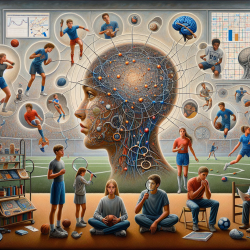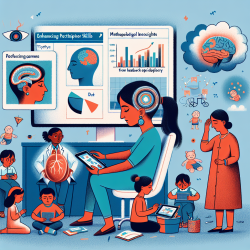Implementing Network Analysis for Better Outcomes in Adolescent Athletes with Mental Health Histories

As a practitioner dedicated to improving outcomes for children, understanding the nuances of how physical, cognitive, and emotional symptoms interrelate in adolescent athletes with a history of mental health problems is paramount. The study "Architecture of Physical, Cognitive, and Emotional Symptoms at Preseason Baseline in Adolescent Student Athletes With a History of Mental Health Problems" offers valuable insights that can inform your practice and enhance your ability to make data-driven decisions.
Key Findings from the Study
The study employed network analysis to explore the interrelationships among symptoms reported by adolescent athletes with a history of mental health issues at the preseason baseline. Here are some of the crucial findings:
- Central Symptoms: Dizziness, feeling more emotional, and feeling slowed down were identified as central symptoms. These symptoms had the strongest aggregate connections with other symptoms in the network.
- Gender Similarities: The study found no significant gender differences in the symptom network structure, although girls reported higher frequencies of symptoms.
- Symptom Clusters: Symptoms like trouble falling asleep, dizziness, sensitivity to light and noise, and difficulty concentrating were strongly interconnected.
Implementing Findings in Practice
These findings can be instrumental in refining your therapeutic approach:
- Focus on Central Symptoms: Given the centrality of dizziness, feeling more emotional, and feeling slowed down, targeting these symptoms could potentially alleviate a broader range of related symptoms.
- Customized Interventions: Understanding the interconnections among symptoms allows for more tailored interventions, which can be particularly beneficial for athletes with complex symptom profiles.
- Gender-Inclusive Strategies: While symptom frequencies differ, the interrelations do not. This suggests that gender-inclusive strategies focusing on symptom interconnections could be effective.
Encouraging Further Research
While this study provides a robust framework, further research is essential to validate these findings across different populations and settings. Consider the following areas for future exploration:
- Longitudinal Studies: Examining the stability of symptom networks over time could offer deeper insights into how symptoms evolve and interrelate post-injury.
- Broader Populations: Extending this research to include athletes with other pre-existing conditions like ADHD or migraines could enhance our understanding of symptom networks.
- Post-Injury Analysis: Applying network analysis to post-injury symptoms could help in designing more effective rehabilitation strategies.
To read the original research paper, please follow this link:
Architecture of Physical, Cognitive, and Emotional Symptoms at Preseason Baseline in Adolescent Student Athletes With a History of Mental Health Problems.
Citation: Iverson, G. L., Jones, P. J., Karr, J. E., Maxwell, B., Zafonte, R., Berkner, P. D., & McNally, R. J. (2020). Architecture of physical, cognitive, and emotional symptoms at preseason baseline in adolescent student athletes with a history of mental health problems. Frontiers in Neurology, 11, 175. https://doi.org/10.3389/fneur.2020.00175










